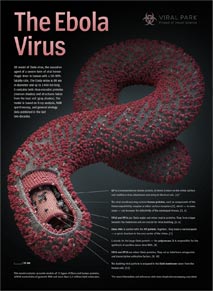A significantly more tolerable approach than standard chemotherapy using the combination of lenalidomide and rituximab as initial therapy in mantle-cell lymphoma is highly active and produces durable responses in most patients, an observational cohort study suggests.
“Treatment of patients with mantle-cell lymphoma, who are frequently older (median age 65 years) and unsuitable candidates for intensive regimens, remains a clinical challenge,” Jia Ruan MD, PhD, of the Meyer Cancer Center at Weill Cornell Medical College and New York-Presbyterian Hospital in New York City and colleagues wrote in The New England Journal of Medicine.
“Our data show that a lower-intensity approach for initial therapy than that usually used in the case of patients with this cancer can be highly active, with durable responses observed in most patients.”
A total of 38 patients who had untreated, measurable mantle-cell lymphoma were enrolled in the study. The median age of the cohort was 65 years (range 42-86 years); 100% of the group had Ann Arbor stage III or IV disease, and 89% had bone marrow involvement.
Rituximab was administered at a dose of 375 mg/m2 once weekly for the first 4 weeks and then once every other cycle until disease progression. During the maintenance phase, lenalidomide was given at a dose of 15 mg a day again on days one through to 21 of every 28-day cycle while rituximab was given once every 8 weeks.
Treatment was continued for at least 36 cycles or until disease progression or unacceptable AEs. For patients with creatinine clearance of 30 to 60 mL/min, lenalidomide was administered at a lower dose of 10 mg day during the induction phase, although the dose was again escalated to 15 mg a day if patients experienced no dose-limiting AEs. During the maintenance phase, lenalidomide was given at a dose of 5 mg a day.
“Patients received thromboprophylaxis with aspirin or low-molecular-weight heparin unless they required treatment for known thrombosis,” Ruan and colleagues added, “[while] asymptomatic carriers of hepatitis B virus received antiviral therapy.”
On the other hand, prophylactic growth factors were not administered empirically.
Grade 3 or 4 hematologic AEs included neutropenia, which occurred in half of the group, thrombocytopenia in 13% of patients, and anemia in 11% of the group. The likelihood that patients would develop hematologic toxicity was higher during the induction phase than in the maintenance phase. Similarly, grade 3 and 4 nonhematological toxicities were only reported during the induction phase and included rash in 29% of patients, tumor flare in 11% of patients, serum sickness associated with rituximab in 8%, and fatigue in another 8% of patients.
Grade 3 infections were reported during the maintenance phase but all resolved with the administration of antibiotics and supportive care.
“Among the 33 patients with normal renal function, 36% had no unacceptable side effects associated with the dose escalation from 20 mg to 25 mg,” Ruan and colleagues noted.
However, 42% of the group did require a reduction in the dose of lenalidomide from 20 mg to 15 mg or less. Of the eight patients who had disease progression while receiving treatment, all remained alive except for an 86-year-old patient who opted for palliation.
Seven patients responded to retreatment with generally favorable outcomes and no indication that prior receipt of the biologic doublet compromised subsequent treatment outcomes.
“The efficacy of lenalidomide plus rituximab in a broad patient population, including patients who were ineligible for intensive approaches, is particularly notable in the context of data reported on patients receiving inpatient-based regimens, including high-dose chemotherapy with autologous hematopoietic-cell transplantation,” Ruan and colleagues observed.
“However, the duration of maintenance therapy remains to be determined, and it is unclear whether the combination of lenalidomide and rituximab is more effective than rituximab alone as maintenance therapy.”


